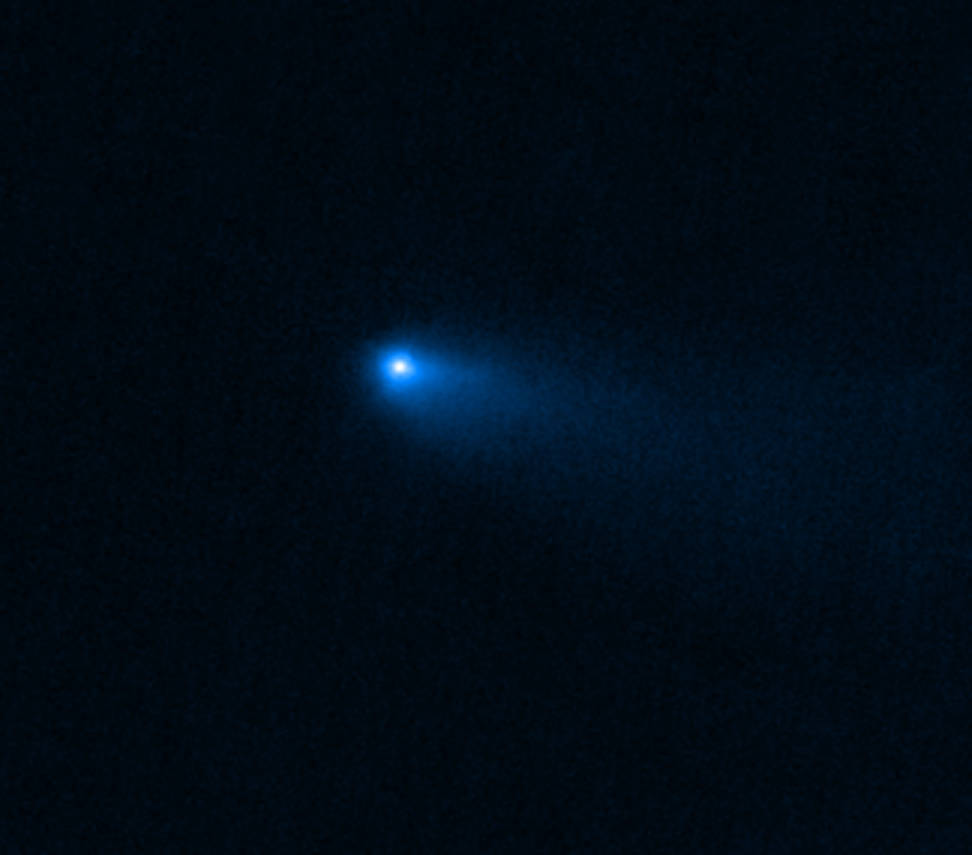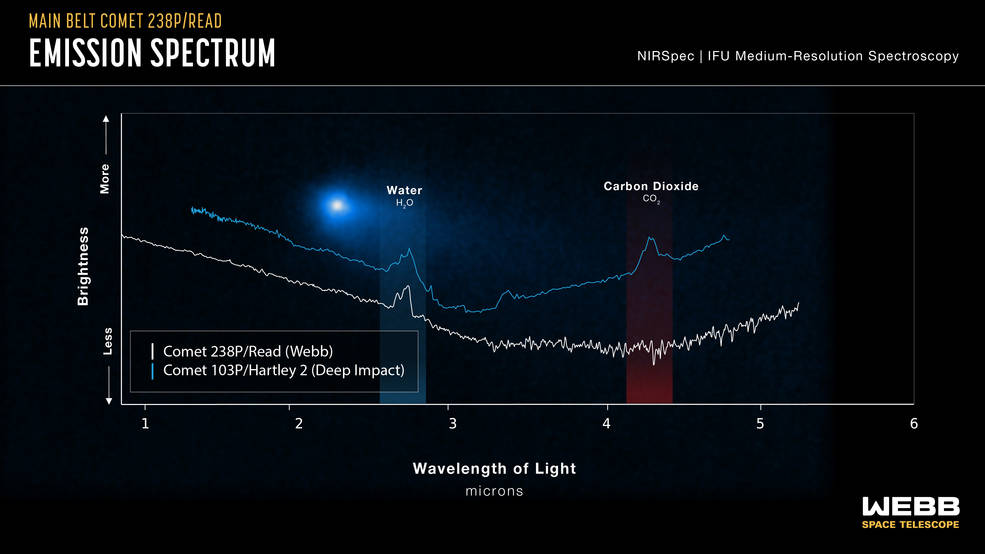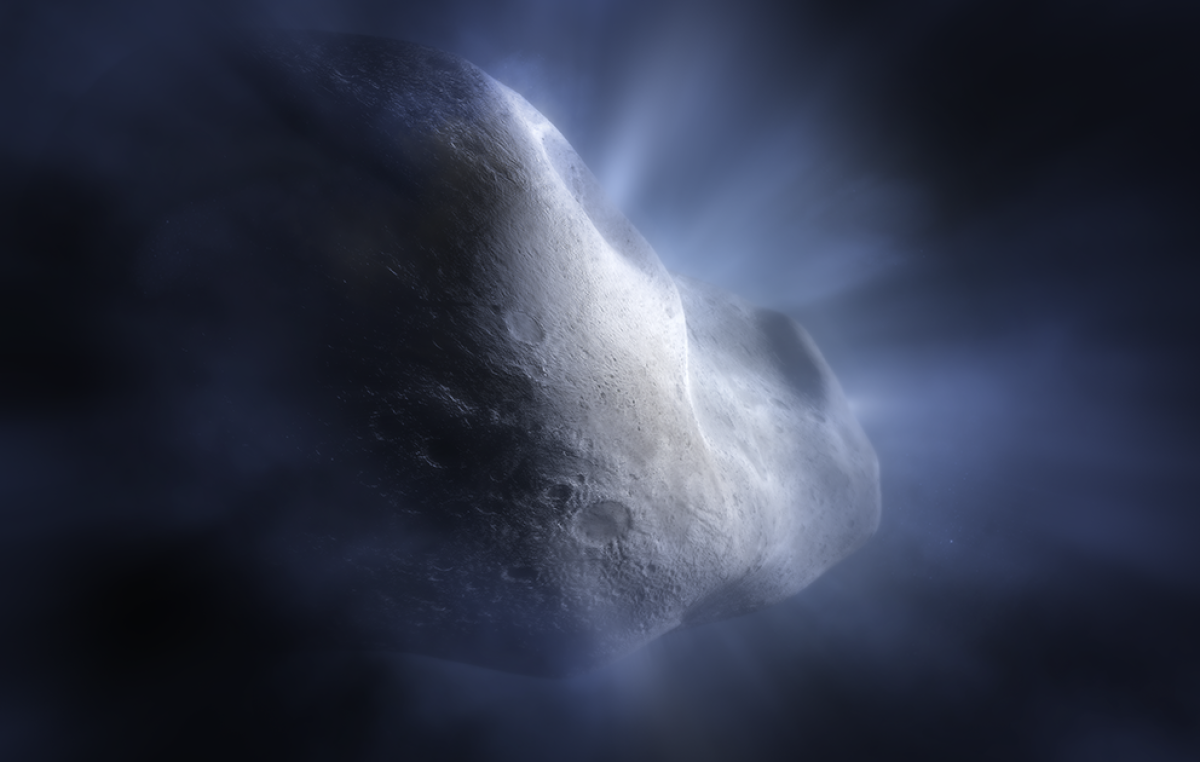Scientists hope that the study of comet 238P/Read, hiding in the main asteroid belt, will help solve the mystery of the appearance of water on Earth.
The James Webb Space Telescope (JWST) has made another scientific breakthrough, using its NIRSpec near-infrared camera to detect water vapor around a main asteroid belt comet known as 238P/Read.
“We saw objects in the belt with all the characteristics of a comet, but only spectral data from JWST proved that there is water ice,” says the study leader, University of Maryland astronomer Michael Kell.
Water vapor around 238P/Read could strengthen the theory that water was delivered to our planet by comets from space.

However, despite their expectations, astronomers did not see carbon dioxide, which normally makes up about 10% of the comet’s material, on 238P/Read. Researchers suggest that it dissipated over billions of years, or that 238P/Read itself formed in a part of the solar system where CO2 is absent.

Further studies should test whether the absence of CO2 is truly unique to 238P/Read, or whether it is a general feature of main belt comets.
The main asteroid belt is the region of the Solar System located between the orbits of Mars and Jupiter. As the name suggests, the region is primarily home to rocky bodies such as asteroids or minor planets, but occasionally comet-like bodies such as 238P/Read are also found. They can be recognized by the periodic glow that appears when they are surrounded by a cloud of dust and gas or a coma.

A comet’s coma and tail are made of solid, icy material that sublimates into gas as comets approach the sun and heat up. This sublimation is why astronomers theorize that all comets originate in the Kuiper Belt or the Oort Cloud, both locations that shield water ice from solar radiation and preserve it.
The classification of “main belt comets” is fairly new and 238P/Read was one of three objects that helped establish this family of comets already found closer to Earth. Astronomers had assumed that water ice could persist in the warmer asteroid belt, but only Webb’s discovery proved it.
The James Webb telescope spotted the first asteroid belts located outside the solar system




